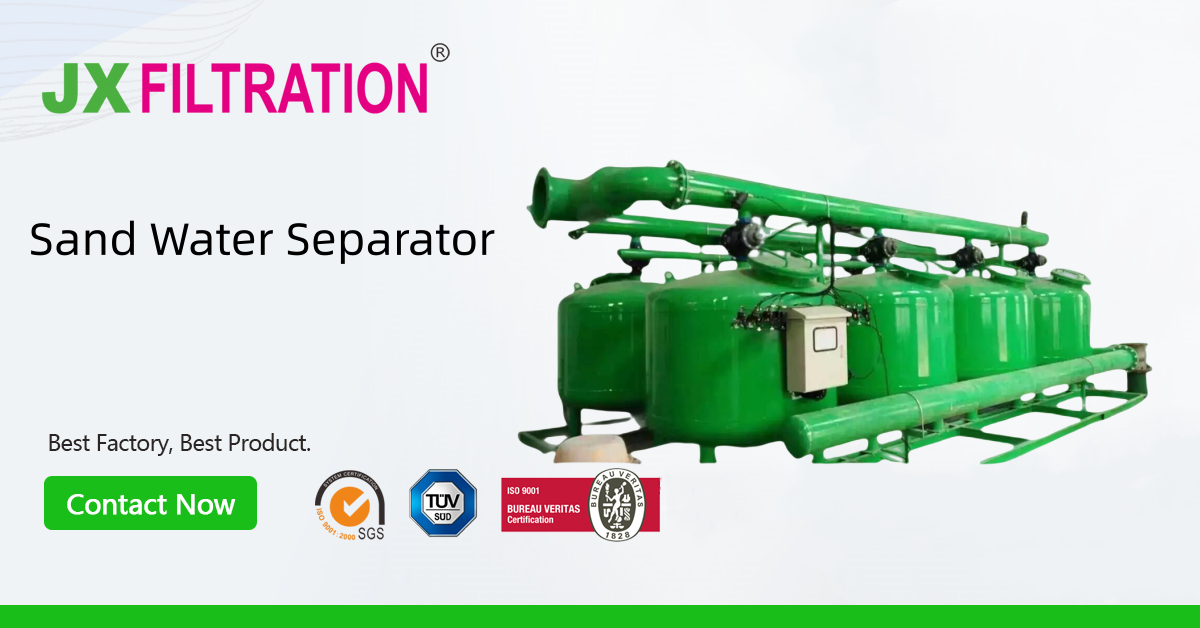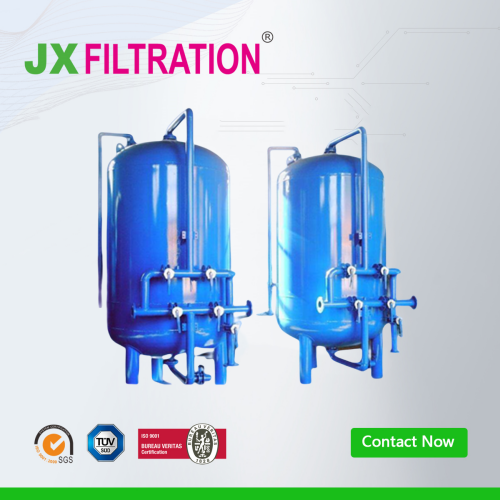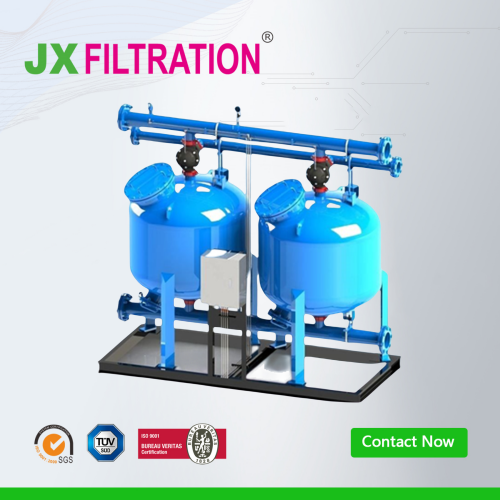What is a Cooling Tower Sand Filter
1. Basic Process Flow
The cooling tower sand filter is used to purify river water for production supplementary use, which requires high water quality and handles large volumes.

Considering the constraints of the existing conditions, including the project's construction timeline, operational lifespan, treatment capacity, space requirements, and inflow/outflow water quality, a shallow sand filter is recommended due to its small footprint and high efficiency.
The side-stream filtration system for the circulating water system is designed as follows:
Return Water → Shallow Sand Filter → Cooling Tower Water Basin.
This setup ensures the purification of water at the customer’s site.
2. System Design Parameters
- Total Treatment Capacity: 375 m³/h
- Equipment Model: One set of FQG56-8 (single tank diameter: 1400 mm)
- Arrangement: Two rows with 4 single tanks per row, fully skid-mounted
- Tank Material: Carbon steel Q235B, with anti-rust primer + topcoat, and epoxy coal tar pitch for anti-corrosion
- Filtration Rate: ≤ 31 m/h
- Filter Layer Thickness: 600 mm
- Inlet Water Quality: SS (Suspended Solids) < 30–50 mg/L
- Outlet Water Quality: SS < 5–10 mg/L
Why Use a Shallow Sand Filter?
The cooling circulation water system is an open system. Dust, impurities from the air, and scale from pipelines can enter the water, deteriorating its quality. As impurities increase, they can clog the heat exchanger's copper tubes, reducing heat exchange efficiency and impacting the cooling system's overall performance.
A shallow sand filter removes impurities, reduces turbidity, and lowers the clogging rate of copper tubes, ensuring the cooling system operates efficiently. Therefore, a shallow sand filter is essential for cooling circulation water systems.
Design Principle
To prevent water quality instability (e.g., high turbidity, colloidal matter, and algae) from affecting the process, it is recommended to locate the water intake point upstream of the plant. This ensures more stable and reliable equipment operation.
If the intake water contains algae or other microorganisms, it is advisable to add a measured amount of disinfectant during the purification process. This prevents the algae and microorganisms from clogging the filter media during filtration, which could lead to frequent backwashing. Frequent backwashing not only wastes water resources but also causes significant fluctuations in the quality and volume of the filtered water.
Any Requirements, Contact Us Now!
Kris
Email/Teams: kris@filtrationchina.com
Mobile/Whatsapp/Wechat: +86 18980776200


